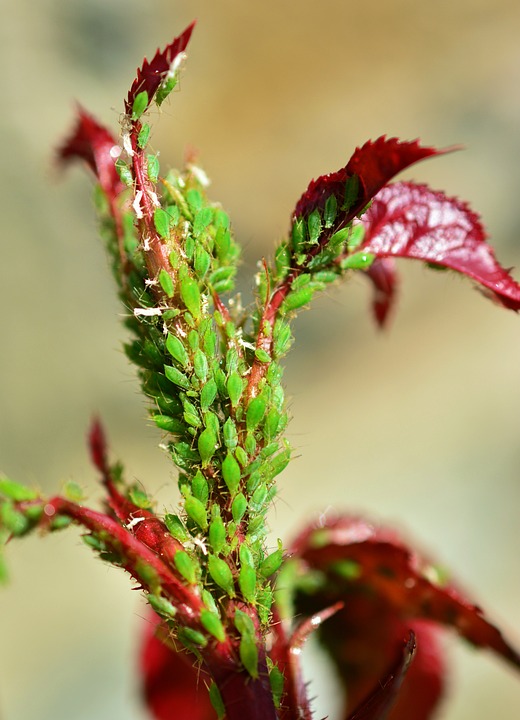Aphids

Scientific Name
Aphidoidea
Description
Aphids are small, soft-bodied insects that come in various colors such as green, black, yellow, or pink. They are typically found on the undersides of leaves or on new plant growth and feed on plant sap, which can weaken plants and cause leaves to curl or yellow.
Characteristics
Aphids have pear-shaped bodies and are often less than 1/8 inch long. They possess long, slender mouthparts designed for piercing plant tissue and sucking sap. Some species have wings, which they use for migration, and they excrete a sticky substance called honeydew that can attract ants and promote sooty mold growth.
Control Methods
- Organic sprays: Apply organic treatments like neem oil, insecticidal soap, or a diluted solution of water with a few drops of dish soap. These remedies target aphids without harming beneficial insects.
- Cultural practices: Utilize companion planting with species like garlic, chives, or marigolds to naturally repel aphids. Incorporate crop rotation and diverse planting to interrupt the aphid life cycle and reduce habitat suitability.
- Preventive methods: Adopt preventive measures by ensuring optimal plant health through balanced watering and fertilization, along with regular inspections to catch infestations early. Set clear thresholds for intervention before populations become problematic.
- Biological controls: Encourage natural predators such as ladybugs, lacewings, parasitic wasps, hoverfly larvae, and predatory beetles to help keep aphid populations in check.
- Mechanical physical: Use a strong jet of water to physically dislodge aphids from plants, and consider hand-picking for smaller infestations.
Natural Enemies
- Ladybugs
- Lacewings
- Parasitic Wasps
- Hoverfly Larvae
- Predatory Beetles
Plants Affected by Aphids
- Egyptian Spinach
- Goji Berry
- Barbados Cherry
- Bulbine
- Catnip
- Chickweed
- Lupine
- Milkweed
- Purple Passionflower
- Purslane
- Root Beer Plant
- Sorrel
- Tagasaste
- Texas Olive
- Tree Medick
- Alfalfa
- Butterwort
- Cardamom
- Cobra Lily
- Elephant Grass
- Galangal
- Italian oregano
- Loquat
- Pigeon Pea
- Strawberry
- Pineapple Sage
- Pomegranate Tree
- Radish
- Raspberry
- Rosemary
- Rue
- Sage
- Snow Pea
- Sundew
- Sunflower
- Thyme
- Tithonia
- Turmeric
- Venus Flytrap
- Yarrow